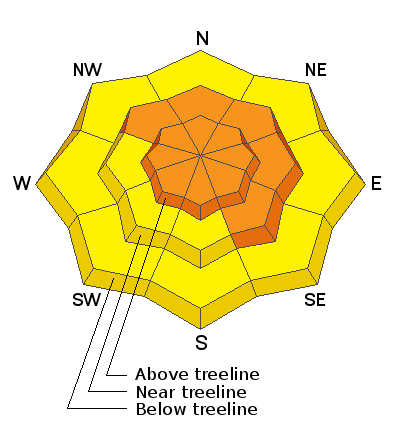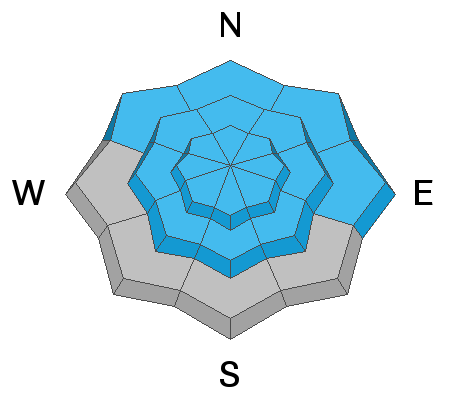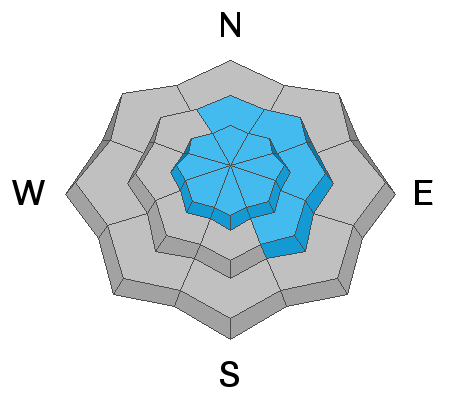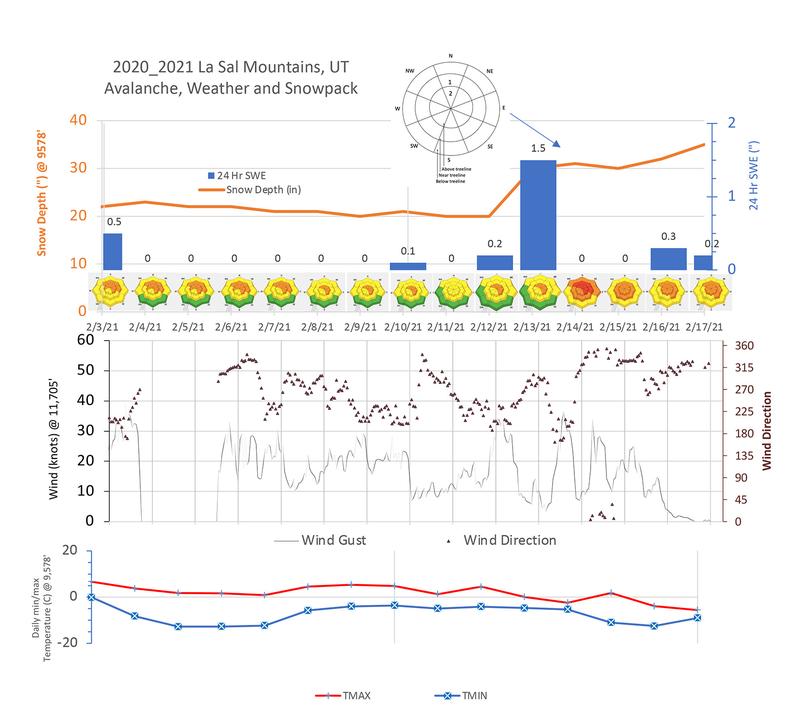The Geyser Pass Road was plowed on Tuesday, but 3"-5" of new snow has fallen since then. 4x4 with good tires is recommended.
The Lower Utah Nordic Alliance (LUNA) last packed and rolled the lower meadow through Gold Basin on Thursday.
24 Hour Snow 2" 72 Hour Snow 2" Base Depth in Gold Basin 50" Wind NW 20-25 Temp 21F
We managed to wring a couple of inches of new snow out of yesterday's brush by. Moderate SW winds yesterday shifted to NW last night where they blew in the 20-30 mph range with gusts as high as 45 mph. They've backed off a bit this morning. Today look for sunny skies, decreasing NW winds, and high temps near 20F at 10,000'. Conditions will remain dry through Tues with a slight chance of snow on Wed. Models are now hinting at a possible return to a more active pattern for the desert southwest by the weekend. We'll keep you posted.
Snowpack Discussion
It's been a great week of powder skiing and riding. On Friday however, the strong sun and warm temperatures moistened the snow surface on south aspects and they are now crusted over. Shifting winds in the high country have also affected exposed surfaces. Seek low angle, sheltered, north-facing slopes for the best and safest conditions. Storms from last week added a significant load to our weak snowpack, and persistent weak layers of sugary faceted snow can now be found on most aspects. Wind-loaded, northerly-facing slopes remain the most likely areas to trigger deep, and dangerous avalanches, but you can also trigger avalanches on more southerly aspects. Avoidance of avalanche terrain or slopes steeper than about 30 degrees is the only sure strategy right now.
It's been a week since any natural avalanche activity has occurred. Natural activity from last weekend's storm was surprisingly low. With the current poor snowpack structure, this means many steep slopes are hanging in balance just waiting for a human trigger.











